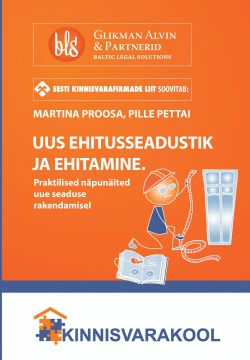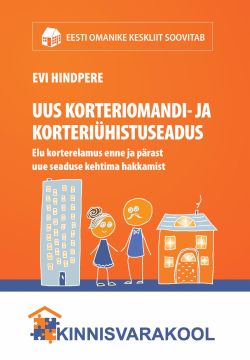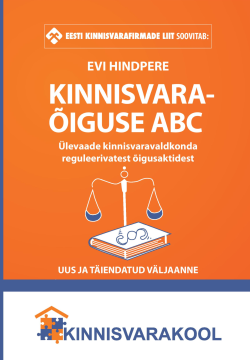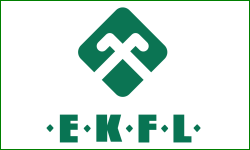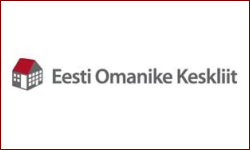 Notwithstanding political squalls blowing louder than ever, the global economy is forging ahead. The acceleration in economic growth and inflation are bringing us closer to an environment that we are accustomed to seeing as normal. Nevertheless, the spreading of protectionist ideas and a volatile security balance may prove fatal to the economy. Estonia’s economic growth is gaining momentum, supported by the recovery of investments.
Notwithstanding political squalls blowing louder than ever, the global economy is forging ahead. The acceleration in economic growth and inflation are bringing us closer to an environment that we are accustomed to seeing as normal. Nevertheless, the spreading of protectionist ideas and a volatile security balance may prove fatal to the economy. Estonia’s economic growth is gaining momentum, supported by the recovery of investments.
The economic environment is growing stronger in spite of the pivotal times in politics.
The political events of the past year have given food for thought to economic analysts. While the political column in the news is painting increasingly gloomier pictures of the near future, economic indicators are, in contrast, moving in a positive direction. In a lot of countries, economic security is at the highest level since 2011. Historically, it has taken between six and eight years to recover from an economic crisis. The currently accelerating pace of economic growth fits well with the previously mentioned pattern. In a number of countries, the use of production resources has reached a level where investments are needed in order to move forward. The recovery of investments has been too long coming. The price of oil is once again stable, which alleviates the economic situation of several major economies that rely on oil. At the same time, inflation is still sufficiently low to drive consumption in countries that import oil.
However, accumulating political risks tend to overshadow positive news from the economic realm. Trade restrictions and insecurity about the future do not support long-term growth of welfare. In the U.S., Donald Trump’s presidency has increased stock markets, at least for the time being. This is the harsh reality of the markets, where short-term revenue is preferred over a long-term plan. Potential stimulation of the economy by even greater borrowing and seeking conflicts with partners to date do not serve the economic interests of the U.S. in the long run. In Europe, hopes that the UK will leave the Union seamlessly have been crushed. It seems likely that the UK will simply “fall out” of the European Community before any agreements are made regarding future economic relations. Thus, neither companies nor people know whether they will be able to conduct business or work on either side of the English Channel in the year 2020.
Strengthening economic growth spurs restoration of inflation
We do, however, believe that any rollover of the political storm to the actual economy will remain modest. Historically, a more volatile security situation has had surprisingly little impact on economic growth. Based on actual and measurable economic indicators, we have adjusted forecasts for several countries upward. So we believe that the U.S. economy will grow by 2.6% this year and 2.5% in 2018. Economic growth in China will also be higher than initially expected – 6.6% this year and 6.2% next year. The rapidly decreasing unemployment and success of the exporting sector in the euro zone should result in a 1.8% and 1.9% increase of the GDP in 2017 and 2018, respectively. A more optimistic outlook for the economies of the Nordic countries is perhaps the most important for Estonia. Economic growth in Sweden should reach 3.1% in 2017 and 2.4% in 2018. We also expect Finland to grow more rapidly than before, although it will be limited to a 1.5% increase in GDP. Exceptionally, the economy of the UK should not be treated with greater optimism since the unpredictable outcome of trade negotiations halts the courage to invest, even if the pound has depreciated to its lowest level in the past 20 years.
One of the most important questions for the world of finance is the further pace of increase of inflation and the policies of central banks in controlling it. Consumer prices have clearly increased at a rapid pace over the past few months, both in Europe and the United States. A potential relaunching of the economy, thanks to a more lax fiscal policy and protectionist cases in trade, may lead to a sooner than expected increase in inflation. Thus, we have raised expectations somewhat for an increase in prices. However, we believe that the increase in prices will remain modest in 2017 and 2018. Central banks are expected to slowly return to a normal monetary policy. We assume that the U.S. Federal Reserve will raise its main interest rate twice this year, even more in the next year with the rate reaching the level of 2.0% by the end of 2018. Although the European Central Bank is likely to continue its asset purchasing programme in 2018, the amount of bonds purchased will begin to decrease this autumn.
Recovery of investments drives economic growth in Estonia
For Estonia, a small open country dependent on foreign trade, an increasingly insulating world that protects its internal market is deleterious. For the welfare of the Estonian people, it is crucial that other countries are willing to do business with us while still supporting us in ensuring our security. Although we are witnessing the spread of a contrary way of thinking, Estonia must be a bolder advocate of free trade and value-based foreign policy. However, attaching a numerical value to the growing risks would be speculative. Today we can proceed from measurable economic indicators, which are good for the Estonian economy. According to prognoses, will Estonian economy grow this year for 2.2% and 3.1% in the year 2018. The rise in investments will be a long awaited change. In Estonia, the State has traditionally played an important role in terms of investments in fixed assets by building new roads and structures. The expected more active use of European Union financial aid, the election year for local self-governments and the plan by the government to increase state investments will have a positive impact on economic growth in the coming years. In the private sector, the continuing wage increase is expected to keep the real estate market on a positive wave.
Since the use of production means of Estonian companies has reached the highest level since 2008, they too are bound to think about investments. Labour market indicators will reflect the protracted clash between business earnings and wage growth. Companies that do not manage to increase the value of their production must become more effective or else they will be excluded from the market. The labour market is also affected by the work ability reform that is gathering speed. Thus, the unemployment rate is predicted to reach 8% in 2018. At the same time, the demand for skilled labour will remain high, which will drive a wage increase. For Estonian companies, this means that they need to be even more ambitious, also when it comes to changing their business model. The good situation of trade partners should allow Estonian exports to grow at a pace of about 4% in the coming years. At the same time, we believe that imports will grow even faster. Inflation will reach more than 2.5% this year, curbing the growth of private consumption; however, in 2018, a significant increase in private consumption can be expected due to the income tax reform.





